Ba7.2
The story seems to have begun anew when the Full Moon appeared
at right ascension day *74 + *242 = *316 (January 31) as
would have been observed in August
1 (Lughnasadh).
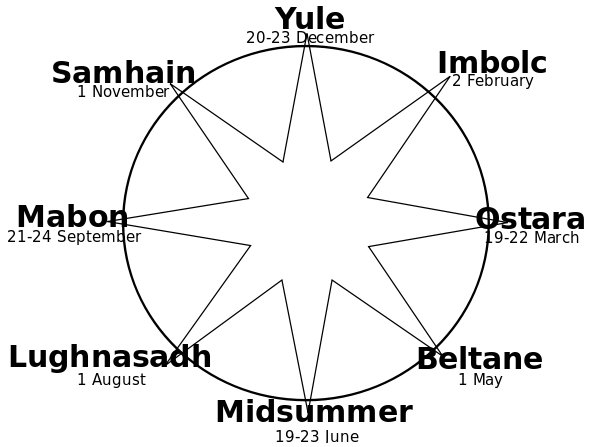
|
NO GLYPH |
 |
240 |
 |
|
Ba1-1 |
Ba6-35 (242 = 2 *
121) |
|
HAEDUS I (*74) |
HAEDUS II (η) |
μ Aquarii (*316.0)
Jan 31 (396) =
213 + 183 |
|
MARCH 31 (*10) |
APRIL 1 (91) |
|
June 3 (*74) |
4
(91 + 64 = 155) |
|
Dec 3 (*257 = *74
+ *183) |
4 (274 + 64 = 338) |
Aug 1 (213 = 396 - 183)
LUGHNASADH |
|
SEPT 30 (90 + 183
= 3 * 91) |
OCT 1 (91 + 183 =
274) |



|
63 * 5 = 314
+ 1 and 6 * 35 = 210. |
 |
 |
 |
 |
 |
|
Ba6-35 (242) |
Ba6-36 |
Ba6-37 |
Ba6-38 |
Ba6-39 |
|
ko te tagata oho - ki
te Raa - kua oho koe ki te Raa e ki te va roa |
eko te tagata kua oho - ki te
hoko huki kua hua ia i raro |
koia ra kua mau - ki te hoko
huki - kua ati ïa mai ko te kava |
ko te tagata kua oho - ki te
haga - o to toki |
|
Raa
Sun; day; i te raá nei, today; raá
îka, good day for fishing. Vanaga. 1. Sun.
2. Day. 3. Time. 4. Name of sub-tribe. Fischer.
Te manu i te raá
= comet. Barthel.
'... The substitution of the sun for the sail,
both of which are called ra or raa
in Polynesia, is a remarkable feature in Easter
Island art ... ' Heyerdahl 3. 1. The sun;
raa ea mai,
raa puneki,
sunrise; raa
tini,
raa toa, noon. P Mgv., Ta.:
ra,
the sun. Mq.: a,
id. 2. Day, date;
a raa nei a, to-day, now;
raa i mua,
day before. P Mgv., Ta.:
ra, a
day. Mq.: a,
id. Churchill. '... The chief
thus makes his appearance at Lakeba from
the sea, as a stranger to the land. Disembarking
at the capital village of Tubou, he is
led first to the chiefly house (vale levu)
and next day to the central ceremonial ground (raaraa)
of the island ...' (Islands of History)
Ta.:
toraaraa, to
raise up. Churchill 2.
Va. 1. Hakava, judge,
judgement. T Mgv.: akava, to judge, to
pass sentence. Pau.: haava, to judge, to
conjecture. Ma.: whakawa, to charge with
crime, to condemn. Ta.: haava, to judge.
2. Hakava, to speak. P Mgv.: va,
to speak. Mq.: vaa, to chatter like a
magpie. The Marquesan retains more of the primal
sense although the simile is an alien
importation. In Samoa va means a noise,
in Tonga va is a laughing noise, in
Futuna va is the disorderly cry of
tumult, and probably it is the initial element
of Viti wa-borabora to speak quickly and
confusedly as when scolding. Its only
identification in Tongafiti territory is Hawaii
wawa the confused noise of a tumult ...
Churchill. Ta.: va, space between the
leaves in a roof. Sa.: va, space between.
Ma.: wa, interval. Churchill. |
|
Jan 31 (396) |
Febr 1 (32) |
2 |
3 |
4 (400) |
| Counting the tresses of Pacha-mama from right to left: |
|
1 |
26 |
78 |
1 |
29 |
90 |
|
2 |
26 |
2 |
30 |
|
3 |
26 |
3 |
31 |
|
4 |
25 |
104 |
4 |
34 |
124 |
|
5 |
26 |
5 |
31 |
|
6 |
27 |
6 |
30 |
|
7 |
26 |
7 |
29 |
| Total = 396 = 182 + 214 |
...
Space
and
time
are
a
single,
related
concept
in
Runasimi
[the
language
of
the
Inca
people],
represented
by
one
word,
pacha,
which
can
also
mean
'world'
and
'universe'.
The
image
of
time
familiar
to
Waman
Puma
was
static
and
spatial:
one
could
travel
in
time
as
one
travels
over
earth
-
the
structure,
the
geography,
remaining
unchanged
...
|
|
μ Aquarii (316.0)
 |
ε Equulei (317.8) |
No star listed (318) |
21h (319.6)
ARMUS =
η
Capricorni
(319.0),
DORSUM =
θ
Capricorni
(319.3),
TSOO = 24 Capricorni
(319.7) |
DRAMASA =
σ
Oct.,
χ
Capricorni (320.0),
ν
Aquarii (320.3),
γ
Equulei (320.6),
ο
Pavonis (320.8) |
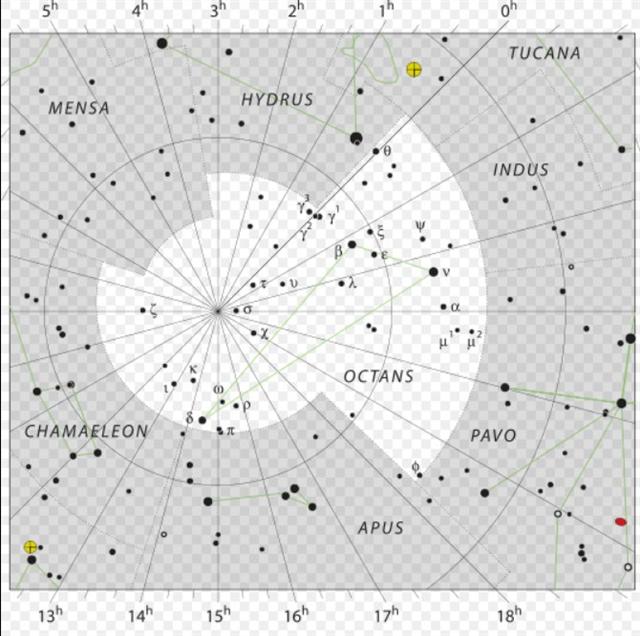 |
|
γ Pyxidis (133.6) |
ζ
Hydrae (134.1),
ρ
Cancri (134.2),
ζ
Oct.
(134.3), ο Cancri (134.6), δ Pyxidis (134.9) |
ACUBENS = α Cancri, TALITHA BOREALIS = ι Ursae
Majoris
(135.0), σ Cancri (135.2), ρ Ursa Majoris
(135.6) |
ν Cancri (136.0),
TALITHA AUSTRALIS = κ Ursae Majoris
(136.1), ω Hydrae (136.8) |
9h (137.0)
σ¹
Ursa Majoris (137.0),
κ
Cancri (137.3),
τ
Cancri (137.4),
ALSUHAIL (al Wazn, of the Weight) =
λ
Velorum
(137.5),
σ²
Ursa Majoris (137.6),
τ
Ursa Majoris (137.7),
ξ
Cancri (137.8)
*96.0 = *137.4 - *41.4 |
|
LUGHNASADH |
Aug
2 |
3 |
4 (216 = 2 * 108) |
5 |
|
... It was 4 August 1968, and it was the feast
day of Saint Dominic, patron of Santo Domingo
Pueblo, southwest of Santa Fe. At one end of the
hot, dusty plaza, a Dominican priest watched
nervously as several hundred dancers arranged in
two long rows pounded the earth with their
moccasined feet as a mighty, collective prayer
for rain, accompanied by the powerful baritone
singing of a chorus and the beat of drums. As my
family and I viewed this, the largest and in
some ways the most impressive Native American
public ceremony, a tiny cloud over the Jémez
Mountains to the northwest got larger and
larger, eventually filling up the sky; at last
the storm broke, and the sky was crisscrossed by
lightning and the pueblo resounded with peals of
rolling thunder ... |
And when the Full Moon 9 nights later would be visible at
the left shoulder of Aquarius, at Sadalsud (β), it would indicate the Sun had reached August 10 at
the great star Alphard, at the curve in the neck of the
Hydra, where the water serpent was firmly attached to the top of the mast of
Argo Navis - thereby indicating that the journey of the
great ancient ship had ended down at the bottom of the
sea.
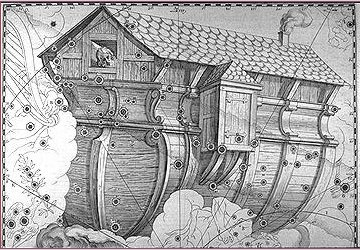
 |
 |
 |
 |
 |
|
Ba6-40 |
Ba6-41 (248) |
Ba6-42 |
Ba6-43 |
Ba6-44 |
|
kua hanau ïa |
ki te hupe o
ruga |
kua tuu huki ïa ki te toga |
e tagata mau -
i te vaha mea |
e tagata hoko |
|
Hupee. Mucus; hupeehupee,
asthma. T Pau., Ta.: hupe,
mucus. Churchill. Ta.: Hupe,
mucus. (Sa.: isupē,
id.) Ma.: hupe,
id. Churchill. Rhume, air
froide. Jaussen according to
Barthel.
Ruga.
Upper part, higher part;
when used as a locative adverb, it
is preceded by a preposition: i
ruga, above, on; ki ruga,
upwards, mai ruga, from
above. When used with a noun the
same preposition is repeated:
he-ea te vî'e Vakai, he-iri ki ruga
ki te Ahu ruga, the woman Vakai
went, she climbed Ahu Runga. Ruga
nui, high, elevated, lofty:
kona ruga nui, high place,
elevated position, high office;
mana'u ruga nui, elevated
thoughts. Vanaga. High up; a ruga,
above; ki ruga, on, above,
upon; ma ruga, above; o
ruga, upper; kahu o ruga,
royal (sail); ruga iho,
celestial. Hakaruga, to
accumulate, to draw up. P Pau.,
Mgv.: ruga, above. Mq.:
úna, úka, id. Ta.: nua,
nia, id. Churchill. |
|
Febr 5 (36) |
6 |
7
(403) |
8 |
9 (40) |
|
... On February 9 the Chorti Ah
K'in, 'diviners', begin the
agricultural year. Both the 260-day
cycle and the solar year are used in
setting dates for religious and
agricultural ceremonies, especially
when those rituals fall at the same
time in both calendars. The ceremony
begins when the diviners go to a
sacred spring where they choose five
stones with the proper shape and
color. These stones will mark the
five positions of the sacred
cosmogram created by the ritual.
When the stones are brought back to
the ceremonial house, two diviners
start the ritual by placing the
stones on a table in a careful
pattern that reproduces the
schematic of the universe. At the
same time, helpers under the table
replace last year's diagram with the
new one. They believe that by
placing the cosmic diagram under the
base of God at the center of the
world they demonstrate that God
dominates the universe. The priests
place the stones in a very
particular order. First the stone
that corresponds to the sun in the
eastern, sunrise position of summer
solstice is set down; then the stone
corresponding to the western, sunset
position of the same solstice. This
is followed by stones representing
the western, sunset position of the
winter solstice, then its eastern,
sunrise position. Together these
four stones form a square. They sit
at the four corners of the square
just as we saw in the Creation story
from the Classic period and in the
Popol Vuh. Finally, the center stone
is placed to form the ancient
five-point sign modern researchers
called the quincunx ...
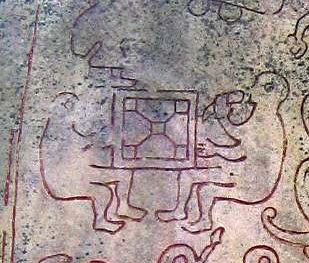 |
|
α Oct. (321.5),
δ
Equulei (321.7),
φ
Capricorni (321.8) |
KITALPHA (Part of a Horse) =
α
Equulei
(322.0),
ALDERAMIN (The Right Arm) =
α
Cephei
(322.9) |
DAI =
ι
Capricorni
(323.5),
β
Equulei (323.8) |
γ
Pavonis (324.1),
YAN =
ζ
Capricorni
(324.6) |
Al Sa'd al Su'ud-22 (Luckiest of the
Lucky) /
Emptiness-11 (Rat)
TSIN = 36 Capricorni
(325.2),
ALPHIRK (The Flock) =
β
Cephei
(325.7),
SADALSUD =
β
Aquarii,
ξ
Gruis (325.9) |
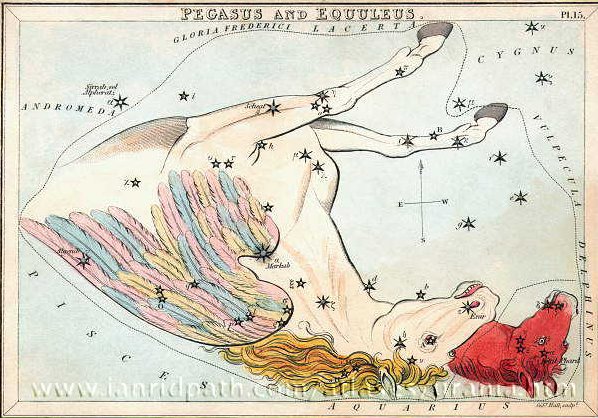 |
|
κ Pyxidis (138.0), ε Pyxidis (138.5) |
π
Cancri (139.2),
MIAPLACIDUS =
β
Carinae
(139.3),
TUREIS (Little Shield) =
ι
Carinae
(139.8) |
No star listed (140) |
θ
Pyxidis (141.5),
MARKAB VELORUM =
κ
Velorum
(141.5),
AL MINHAR AL ASAD (The Nose of the
Lion) =
κ
Leonis
(141.6),
λ
Pyxidis (141.9) |
Star-25 (Horse) /
ANA-HEU-HEU-PO-5 (Pillar where
debates were held)
ALPHARD (The Horse) =
α
Hydrae
(142.3),
ω
Leonis (142.6),
τ¹
Hydrae (142.7) |
|
Aug 6 |
7 |
8 |
9 |
10 (222) |
|
NO GLYPH |
 |
240 |
 |
8 |
 |
|
Ba1-1 |
Ba6-35 (242 = 2 * 121) |
Ba6-44 (251) |
|
HAEDUS I (*74) |
HAEDUS II (η) |
μ Aquarii (*316.0)
Jan 31 (396) = 213 + 183 |
SADALSUD (*325)
Febr 9 (40 = 405) |
|
MARCH 31 (*10) |
APRIL 1 (91) |
|
June 3 (*74) |
4 (91 + 64 =
155) |
|
Dec 3 (*257 = *74 + *183) |
4 (274 + 64 =
338) |
Aug 1 (213 = 396 - 183)
LUGHNASADH |
Aug
10 (40 + 182 = 222)
AL-PHARD
→ Das Pferd |
|
SEPT 30 (273 = 3 * 91) |
OCT 1 (91 + 183 = 274) |
|
3 * 84 = 252 |

|


















